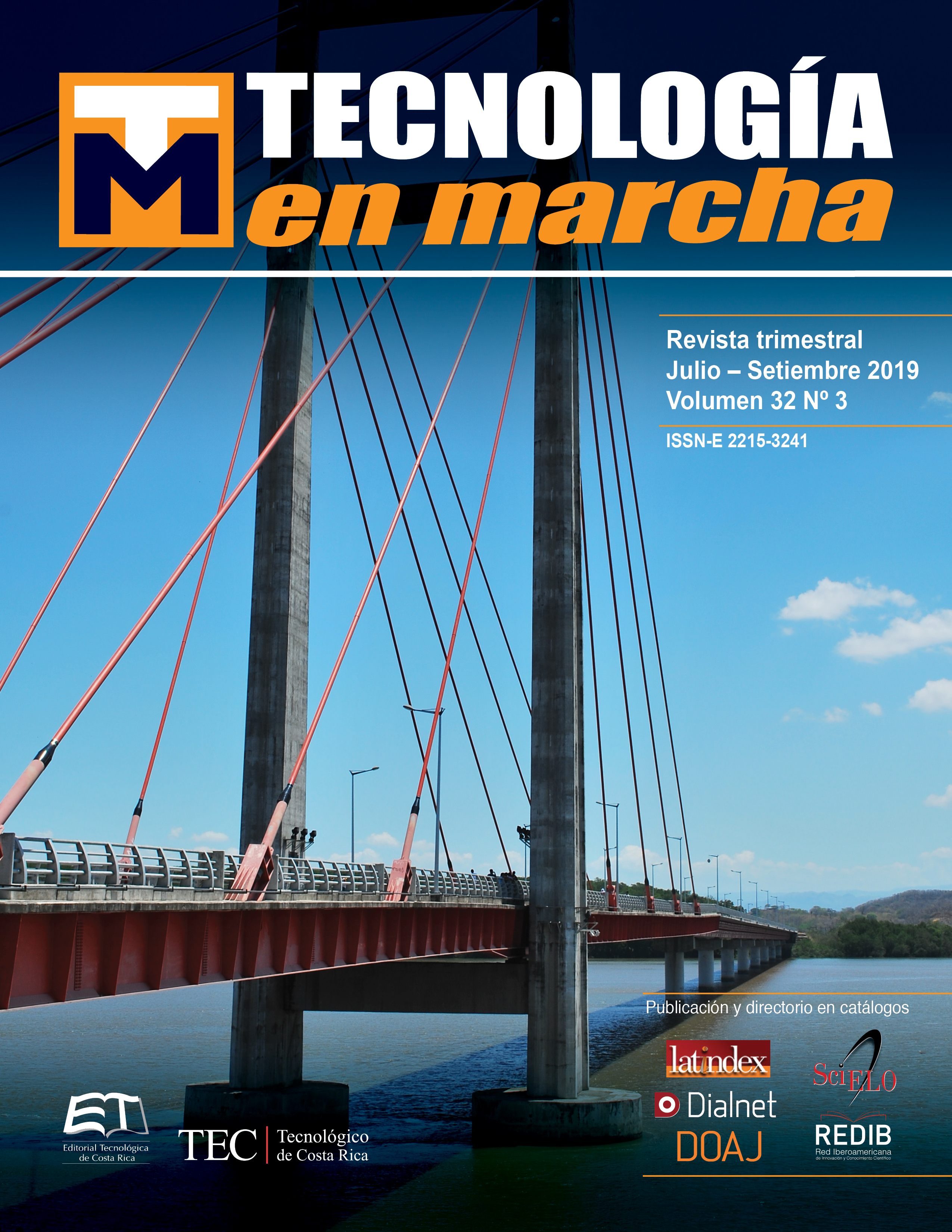Seasonal Guild Variation of a Bat Assemblage in an Agricultural Landscape of a Tropical Dry Forest of Costa Rica
Main Article Content
Abstract
In Costa Rica, the tropical dry forest is restricted into the North Pacific, being one of the few remnants of the Mesoamerican dry forest. This forest presents remarkable climatic variation throughout the year, especially in precipitation. This variation makes it necessary for the animals that live here to adapt according mainly to food availability. We analyze a bat assemblage in terms of its species richness and guild composition in an agro dry forest landscape. We describe how the presence, abundance and guilds of different bat species varies through time and closely relates to rainfall pattern, distinctly affecting nectarivorous, frugivorous, insectivorous or hematophagous. We propose that the species that make up the assemblage of bats at this site probably make local movements periodically, using the area only temporarily. We emphasize that, given the movement of species during the year, the maintenance of natural elements such as forest patches and wetlands within ago-landscapes is mandatory in order to achieve a regional conservation strategies.
Article Details
Los autores conservan los derechos de autor y ceden a la revista el derecho de la primera publicación y pueda editarlo, reproducirlo, distribuirlo, exhibirlo y comunicarlo en el país y en el extranjero mediante medios impresos y electrónicos. Asimismo, asumen el compromiso sobre cualquier litigio o reclamación relacionada con derechos de propiedad intelectual, exonerando de responsabilidad a la Editorial Tecnológica de Costa Rica. Además, se establece que los autores pueden realizar otros acuerdos contractuales independientes y adicionales para la distribución no exclusiva de la versión del artículo publicado en esta revista (p. ej., incluirlo en un repositorio institucional o publicarlo en un libro) siempre que indiquen claramente que el trabajo se publicó por primera vez en esta revista.
References
[2] G. Hartshorn, “Plantas,” in Historia Natural de Costa Rica, San José, Editorial de la Universidad de Costa Rica, 1991, pp. 119-354.
[3] R. Dirzo, H. Young, H. Mooney y G. Ceballos, Seasonally Dry Tropical Forests: Ecology and Conservation, Washington, DC: Island Press, 2011.
[4] F. Gordon W, B. Herbert. G y Paul. A, «Comparative phenological studies of trees in tropical wet and dry forests in the lowlands of Costa Rica,» Journal of Ecology, vol. 62, nº 3, pp. 881-919, 1974.
[5] K. Stoner y R. Timm, «Tropical Dry Forest Mammals of Palo Verde,» in Biodiversity conservation in Costa Rica: Learning the lessons in a seasonal dry forest, Berkeley, University of California Press, 2004, pp. 48-66.
[6] S. Tsang, A. Cirranell, P. Bates y B. Simmons, «The Roles of Taxonomy and Systematics in Bat Conservation,» de Bats in the Anthropocene: Conservation of Bats in a Changing World, Switzerland, Springer, 2015, pp. 503-538.
[7] R. Stevens, S. Cox, R. Strauss y M. Willig, «Patterns of functional diversity across an extensive environmental gradient: vertebrate consumers, hidden treatments and latitudinal trends,» Ecology letters, vol. 6, nº 12, pp. 1099-1108, 2003.
[8] T. Kunz, E. Braun de Torrez, D. Bauer, T. Lobova y T. Flemming, «Ecosystem services provided by bats,» Annals of the New York Academy of Sciences, vol. 1223, nº 1, pp. 1-38, 2011.
[9] Instituto Meteorológico Nacional de Costa Rica, «IMN,» IMN, 8 8 2018. [En línea]. Available: https://www.imn.ac.cr. [Último acceso: 10 7 2018].
[10] E. Heithaus y T.H Flemming., « Foraging movements of a frugivorous bat, Carollia perspicillata (Phyllostomatidae),» Ecological Monographs, vol. 48, nº 12, pp. 127-143, 1978.
[11] R. M. Timm, R. K. LaVal y B. Rodríguez, «Clave de campo para los murciélagos de Costa Rica,» Brenesia, vol. 52, nº 1, pp. 1-32, 1999..
[12] R. LaVal y B. Rodríguez, Murciélagos de Costa Rica, Heredia: INBio, 2002.
[13] C. González-Salazar, E. Martínez-Meyer y G. López-Santiago, «A hierarchical classification of trophic guilds for North American birds and mammals,» Revista Mexicana de Biodiversidad, vol. 85, nº 3, pp. 931-941, 2014.
[14] K. Clarke, «Non-parametric multivariate analyses of changes in community structure,» Australian Journal of Ecolog, vol. 18, nº 1, p. 117–143, 1993..
[15] D. Mocko, «Goddard Earth Sciences Data and Information Services Center,» NASA/GSFC/HSL, 2012. [En línea]. Available: https://earthdata.nasa.gov/about/daacs/daac-ges-disc (10.5067/Z62LT6J96R4F). [Último acceso: 29 4 2018].
[16] P. Opler, G. Frankie y H. Baker, «Rainfall as a factor in the release, timing, and synchronization of anthesis by tropical tress and shrubs,» Journal of Biogeography, vol. 3, nº 2, p. 231–236, 1976.
[17] L. Queiroz de Oliviera, R. Marciente, W. Magnusson, P. Estefano y D. Bobrowiec, «Activity of the insectivorous bat Pteronotus parnellii relative to insect resources and vegetation structure,» Journal of Mammology, vol. 96, nº 5, pp. 1036-1044, 2015.
[18] L. Miles, A. Newton, R. DeFries, C. Ravilious, I. May, S. Blyth, V. Kapos y G. James, «A global overview of the conservation status of tropical dry forests,» Journal of Biogeography , vol. 33, nº 1, pp. 491-505, 2006.

